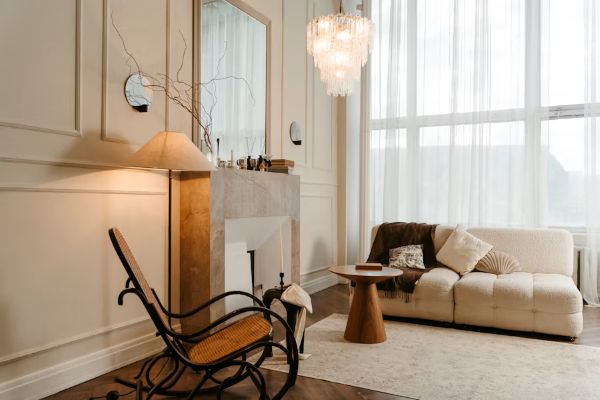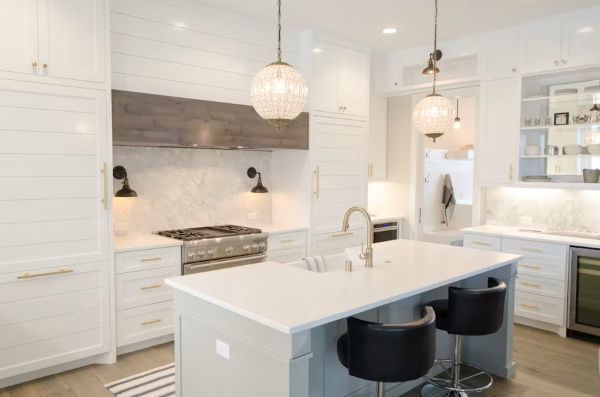You know that feeling when you walk into a home and it just… feels good? You cannot quite point to a single object. There is no flashy chandelier demanding applause. The room is calm, the temperature is right, and conversation flows without shouting over echoes. That is invisible luxury—the quiet, behind-the-scenes decisions that make a house live smarter, softer, and kinder.

This isn’t about showing off. It’s about building a home that looks after you when no one is watching.
What “Invisible Luxury” Really Means
Think of invisible luxury as everything that upgrades the experience but rarely appears on Instagram. It’s not a marble island; it’s the way drawers glide shut without thumping. It’s the whispery hush when the front door closes. It’s the warm floors on a winter morning. The reward isn’t visual. It’s sensory, practical, and daily.
The best part? These upgrades compound. Good decisions in the bones of a home make every “visible” piece feel better—your sofa, your art, your dinner parties.
Start With Silence: Acoustic Comfort
Sound is the most underrated design material. Hard surfaces can turn beautiful rooms into echo chambers. Guests won’t say, “Your acoustic panels are spectacular,” but they will stay longer and talk softer.
Layer thick curtains, rugs with dense underlay, and fabric on at least one large surface. Add soft-close hardware to cabinetry. If you’re renovating, consider sound-dampening drywall in shared walls and ceilings. A quiet home feels more expensive, even when the furniture isn’t.
Small fix, big payoff: Felt pads under every chair and table. It’s the 10-minute upgrade that keeps floors pristine and eliminates scraping noises you didn’t notice were stressing you out.
Water Pressure, Not Water Features
A statement tap is fun. But perfect water pressure is unforgettable. Replace aging flexi hoses, clean aerators, and—if your water is hard—install a softener or at least point-of-use filters. Hot water should arrive promptly; a recirculation pump can help. None of these photographs is good. All of it feels like hospitality.
Pro tip: Choose one shower and make it perfect. Right head, right pressure, right temperature stability. It sets the tone for your morning and your mood.
The Light You Don’t See
Overhead glare makes even high-end rooms look harsh. Invisible luxury uses layers—ambient, task, accent—and dimmers everywhere. Put lights on zones so you can turn on just enough. Warm-white bulbs in living areas, neutral-white in task zones. You don’t need more lights; you need smarter ones.
Add night-lights in hallways and bathrooms. Guiding the way at 2 a.m. without waking anyone? That’s grace.
The Quiet Heroics of Materials
Durability is glamour in slow motion. Choose cabinet interiors that wipe clean and won’t swell. Select drawer boxes you’ll never strain to open. Use door hardware with heft; it changes how a room feels. People won’t see premium hinges or drawer slides, but they’ll feel the quality in their hands.
The Roof Over (and Under) Your Head
A beautiful ceiling means nothing if the house leaks heat, cold, or sound. High-quality insulation in the attic and walls, plus airtightness around penetrations, will make your spaces quieter and more efficient. If you’re already addressing maintenance, consider upgrading underlayment and ventilation—these are the hidden layers that boost comfort and longevity. You don’t need to post about roofing to appreciate what it does; you’ll feel it every month when the bill drops and the rooms stay steady.
Floors That Give, Not Take
Hard floors are easy to clean, but they can be punishing underfoot. Add underlayment that quiets footsteps and provides a touch of spring. Use entry mats that trap grit before it scratches. If you’re adding radiant heat, start where you stand the most: kitchen, baths, and beside the bed. Warmth at your feet is an everyday luxury no one sees coming.
The Pantry You Don’t Show Your Friends
Open shelves get the attention. Hidden storage does the work. A pantry with good lighting, adjustable shelves, and quiet drawers prevents visual chaos from spilling into the rest of your home. Label the insides of doors. Put baking sheets upright. Keep a small utility zone for batteries, tools, and bulbs. Order is silent, but its impact is loud.
Doors, Seals, and Small Frictions
Upgrade the parts you touch a hundred times a day. Solid-core interior doors feel substantial and muffle noise between rooms. Door sweeps keep dust and drafts where they belong. Quality weatherstripping is the difference between “it’s chilly in here” and “what a calm space.”
Cabinet pulls that don’t bite your fingers. Light switches are located exactly where your hand expects them. These micro-decisions are the Fibonacci sequence of comfort—small numbers adding up to harmony.
Kitchen Venting: The Unseen Guest at Dinner
A great meal should smell delicious while it’s cooking, not the next morning. Proper extraction—sized for your cooktop and ducted outside—keeps air clean and surfaces less sticky. Choose a fan you’ll actually use (translation: quiet) and replace filters on schedule. No one will ever thank your range hood. They’ll thank you for the way your home always feels fresh.
Laundry That Doesn’t Announce Itself
If you can, separate laundry from living. Add a pocket door with soft-close, rubber pads under machines, and a counter that swallows the chaos. Good task lighting and a rail for hanging shirts straight from the dryer reduce ironing. Invisible luxury is the absence of nuisance.
Garden Comfort Most People Miss
The outside version of invisible luxury is microclimate. Shade where you sit. Wind protection where you dine. Drip irrigation that waters early while you sleep. Path lights that guide without glare. Your guests will notice the ambiance; they’ll never see the timer you set correctly.
Maintenance: The Ritual That Saves Beauty
Luxury that lasts is maintained. Put home care on a calendar—filters quarterly, gutters biannually, seals yearly, deep appliance cleans seasonally. It’s not glamorous, but it keeps everything else feeling effortless. In the future, you will be grateful.

The Human Test: Live in It
Here’s how to know you’re investing in the right things: live a week and write down every tiny irritation. The drawer that bangs. The cold patch by the window at night. The lamp that throws glare on your screen. Fix those. Then move to the next tier. Your list is your design brief—and it’s more honest than any moodboard.

